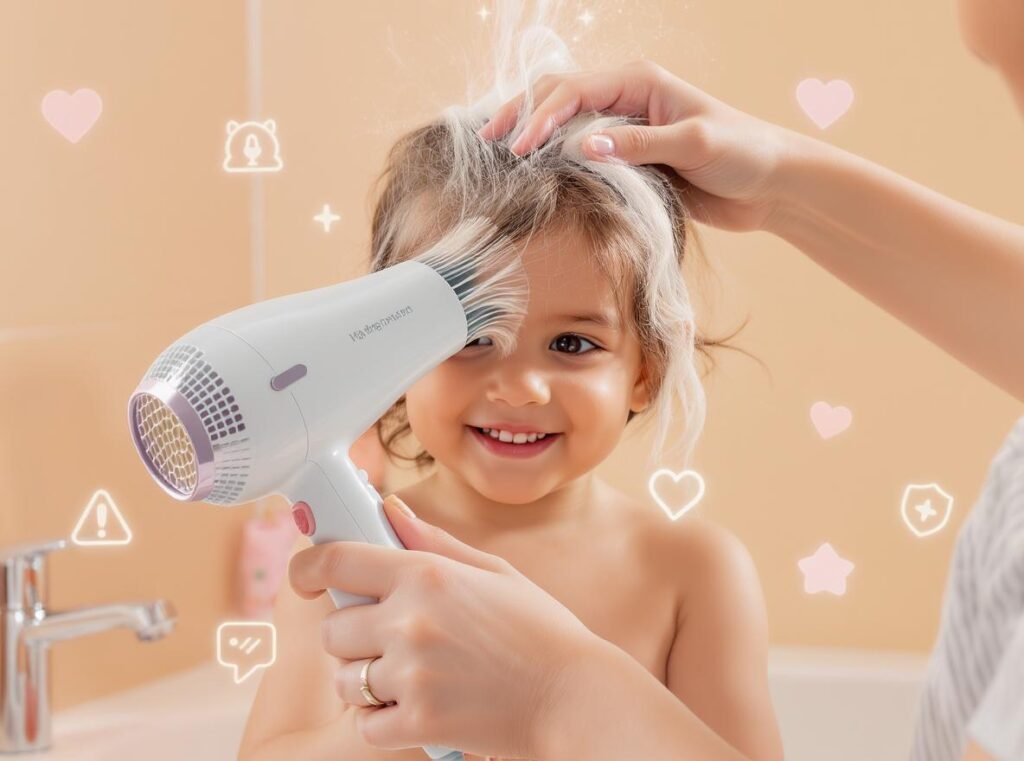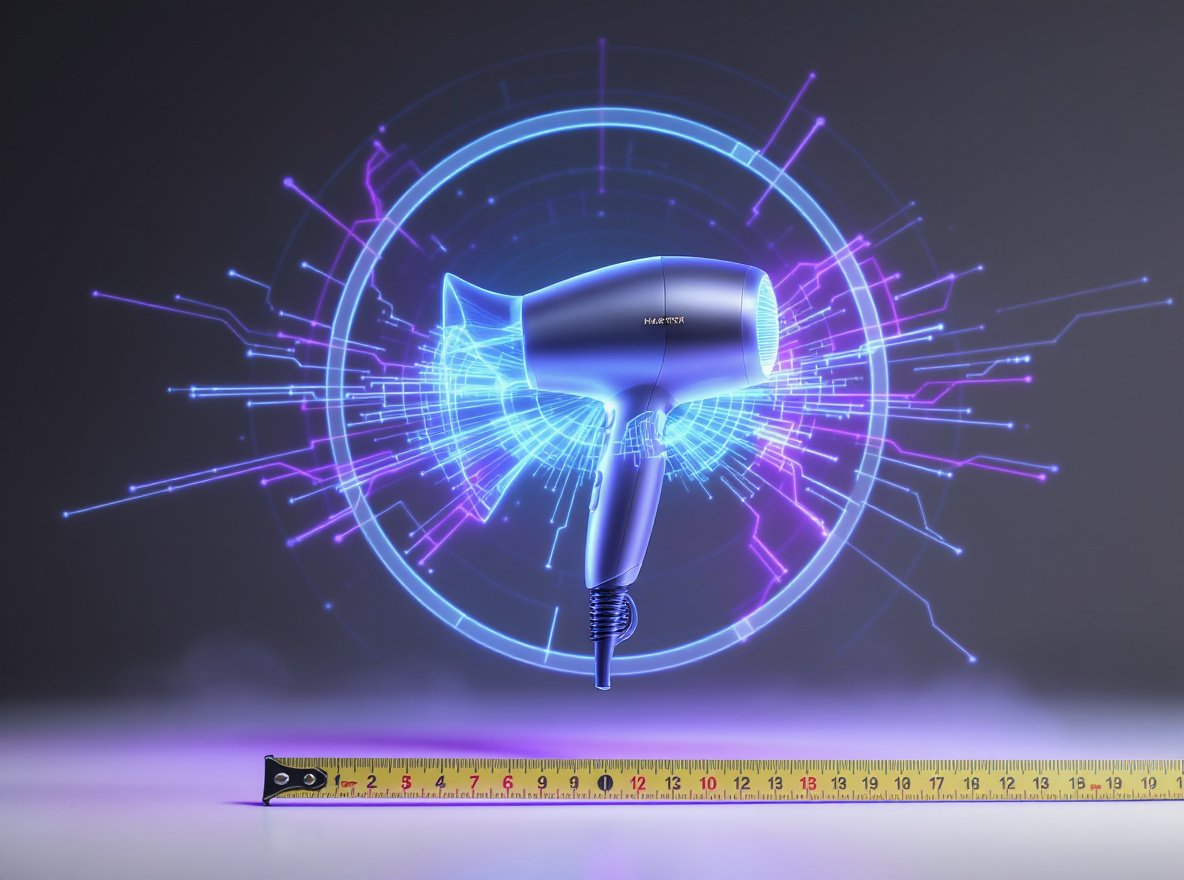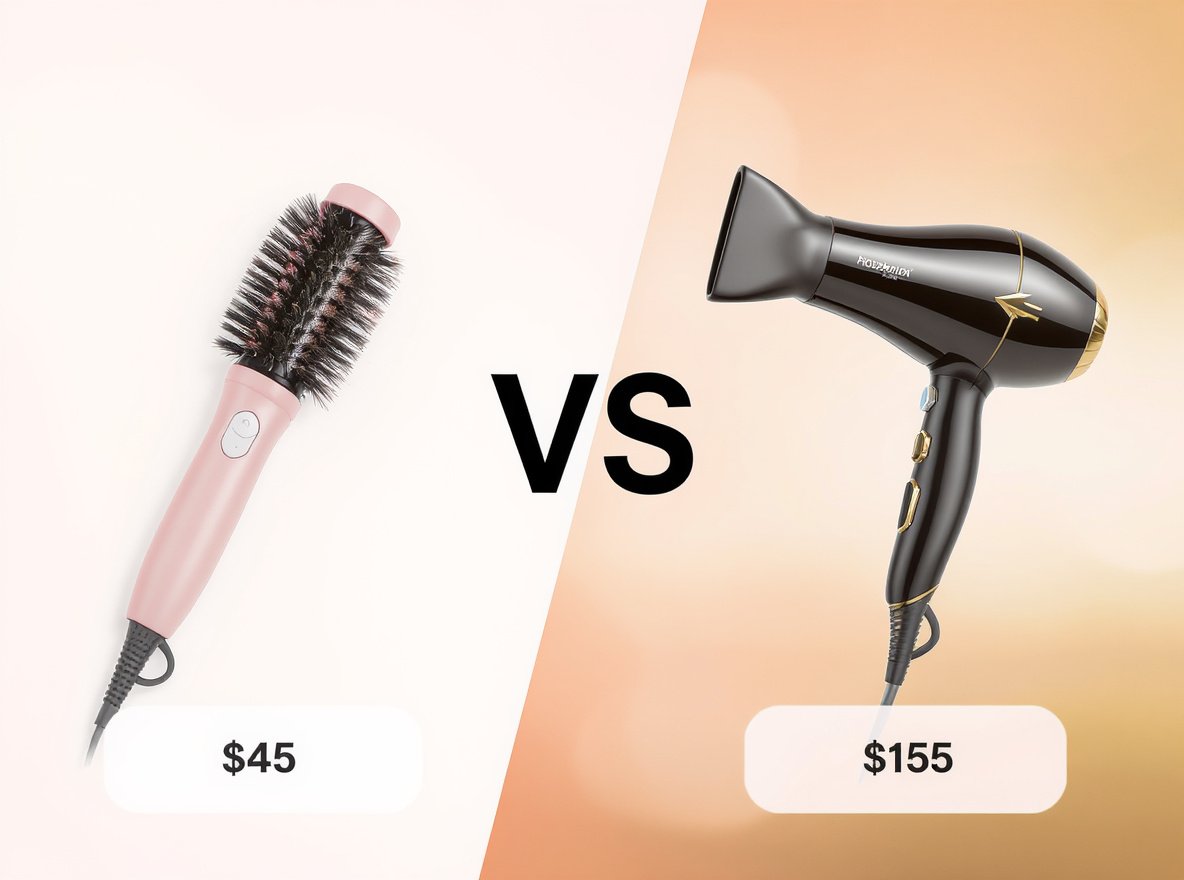Every parent knows the struggle of drying their child’s hair without tears, burns, or tantrums. You’re not alone in wondering if there’s a safer, gentler solution designed specifically for little ones.
Yes, there are hair dryers specifically designed for children. These models are typically smaller, lighter, quieter, and have safety features tailored to protect young, sensitive scalps and fine hair. Brands like Laifen, Suying, and Deogra offer child-friendly hair dryers with enhanced safety mechanisms.
Let’s explore everything you need to know about choosing the right hair dryer for your child’s safety and comfort.
Table of Contents
ToggleWhat Makes a Hair Dryer “Child-Safe”?
Understanding the difference between regular and child-safe hair dryers is crucial for parents prioritizing their little one’s safety and comfort.
Child-safe hair dryers include several features to minimize risks and maximize comfort: lower heat settings to prevent burns, gentle airflow to reduce tangling, lightweight design for easy handling, cool shot buttons, overheat protection, anti-scalding design, and noise reduction for quieter operation.
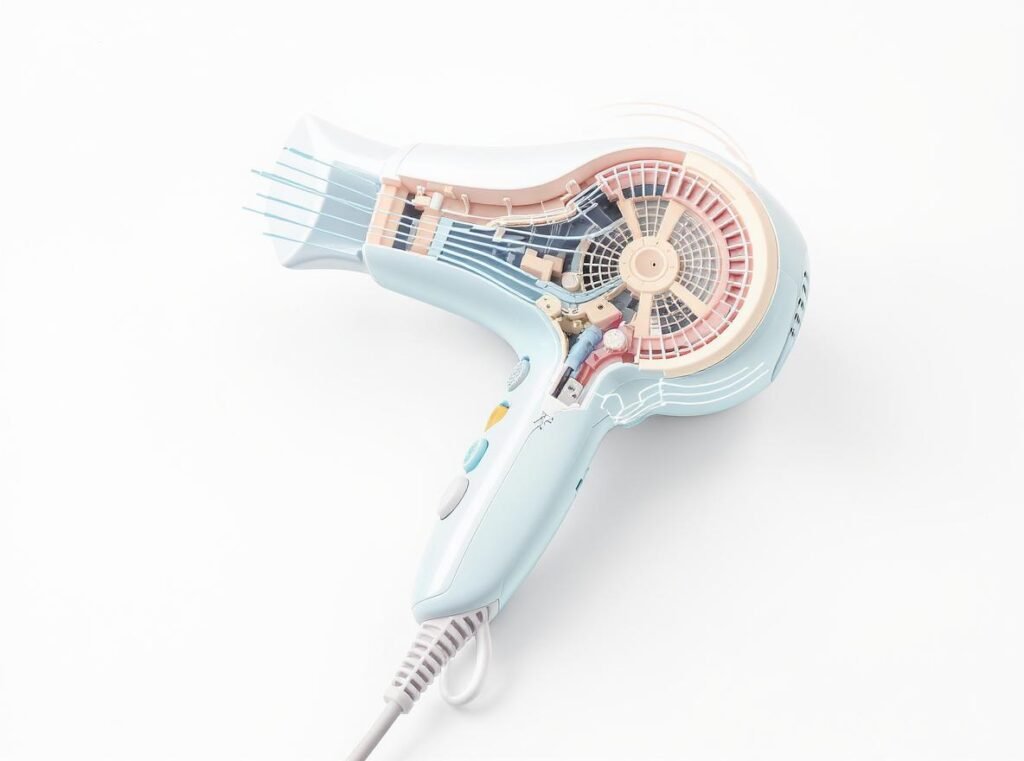
The key differentiators focus on protecting delicate scalps and fine hair. Lower heat settings prevent burns and protect sensitive hair from damage, while gentle airflow reduces tangling and discomfort during the drying process.
Safety mechanisms provide multiple layers of protection. Overheat protection automatically shuts off if the dryer gets too hot, while anti-scalding design prevents accidental burns from direct contact with heating elements.
Noise reduction features make the experience less stressful for children who may be sensitive to loud sounds. Many child-safe models operate significantly quieter than standard adult dryers.
Additional safety features include:
- Cool shot button for setting styles and reducing heat exposure
- Honeycomb back design prevents hair from getting caught in the dryer
- GFCI safety plug reduces risk of electric shock if the dryer contacts water
- Shorter drying times to minimize scalp heat exposure
| Safety Feature | Purpose | Child Benefit |
|---|---|---|
| Lower Heat Settings | Prevents burns | Protects sensitive scalp |
| Gentle Airflow | Reduces tangling | More comfortable experience |
| Overheat Protection | Prevents overheating | Automatic safety shutoff |
| Anti-Scalding Design | Prevents burns | Direct contact protection |
| Noise Reduction | Quieter operation | Less intimidating for kids |
Do Children Really Need Special Hair Dryers?
Parents often debate whether investing in a child-specific hair dryer is necessary or if regular dryers can suffice with proper supervision.
While it’s not strictly necessary for every child to have a special hair dryer, using one designed for children can significantly reduce the risk of burns, discomfort, and hair damage. Children’s hair and scalps are more sensitive than adults’, and standard dryers may be too hot, heavy, or loud for them.
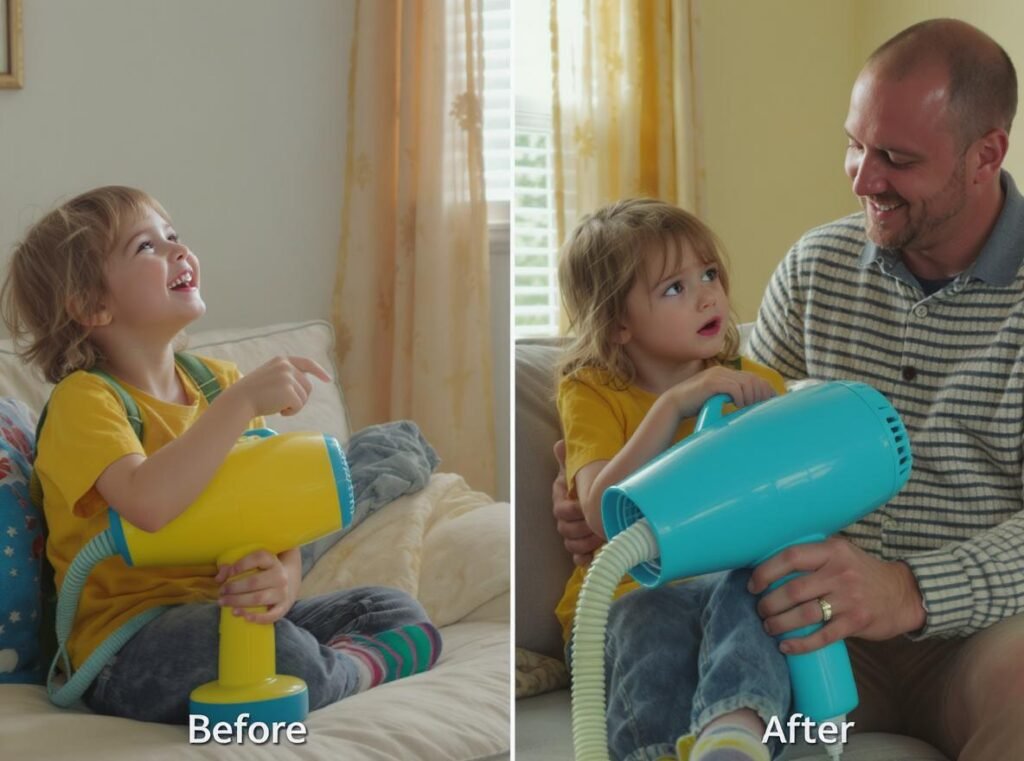
Children’s physiological differences make specialized dryers beneficial. Their scalps are more sensitive to heat, and their fine hair requires gentler treatment to prevent damage. Standard adult dryers typically operate at temperatures that can easily burn delicate child skin.
Weight and ergonomics play crucial roles in safety. Adult hair dryers are designed for adult hand sizes and strength levels. Children struggle to hold heavy dryers steady, increasing the risk of dropping the device or accidentally touching hot surfaces.
The psychological aspect matters too. Special models make the hair drying process safer and more pleasant, especially for young children or those with fine or curly hair who may already find hair care challenging.
Consider these scenarios where child-specific dryers prove most beneficial:
- Toddlers and young children with sensitive scalps
- Children with fine, easily damaged hair
- Kids who are fearful of loud noises
- Families teaching children independent hair care
- Children with special needs requiring gentler approaches
What Safety Features Should You Look For?
When selecting a hair dryer for children, specific safety features can make the difference between a safe experience and a potential accident.
When choosing a hair dryer for a child, prioritize these safety features: adjustable heat and speed settings, cool shot button, overheat protection, anti-scalding and honeycomb back design, shorter drying time capabilities, proper cord safety, and GFCI safety plug for water contact protection.
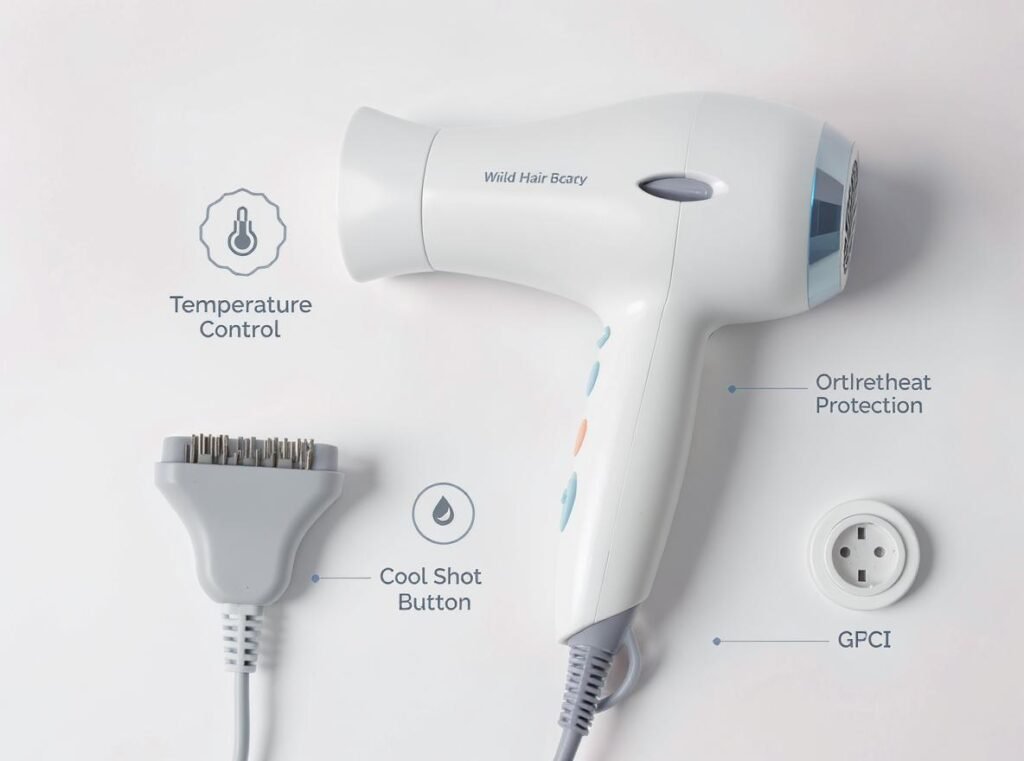
Temperature control stands as the most critical safety feature. Adjustable heat and speed settings allow customization for different hair types and sensitivities, ensuring you can find the perfect balance for your child’s needs.
Electrical safety features protect against the most serious hazards. The Consumer Product Safety Commission (CPSC) emphasizes the importance of GFCI safety plugs, which protect against electric shock if the dryer comes into contact with water.
Essential safety features include multiple protective elements:
Primary Safety Features:
- Overheat protection that prevents dangerous temperature buildup
- Cool shot button for setting styles while minimizing heat exposure
- Anti-scalding design that prevents burns from direct contact
- Honeycomb back design preventing hair entanglement
Secondary Safety Features:
- Shorter drying time to reduce scalp heat exposure
- Cord safety management to prevent tripping hazards
- Automatic shutoff mechanisms for extended safety
- Child-lock features to prevent setting changes
Modern child-safe dryers often incorporate smart technology that monitors temperature and automatically adjusts settings to maintain safe operating conditions throughout the drying process.
How Do Child Hair Dryers Compare to Regular Ones?
Understanding the technical and practical differences between child and adult hair dryers helps parents make informed purchasing decisions.
Child hair dryers are designed to be safer and easier for children to use, while regular dryers focus on speed and styling versatility for adults. Key differences include size, heat settings, airflow strength, noise level, and safety features specifically designed for young users.
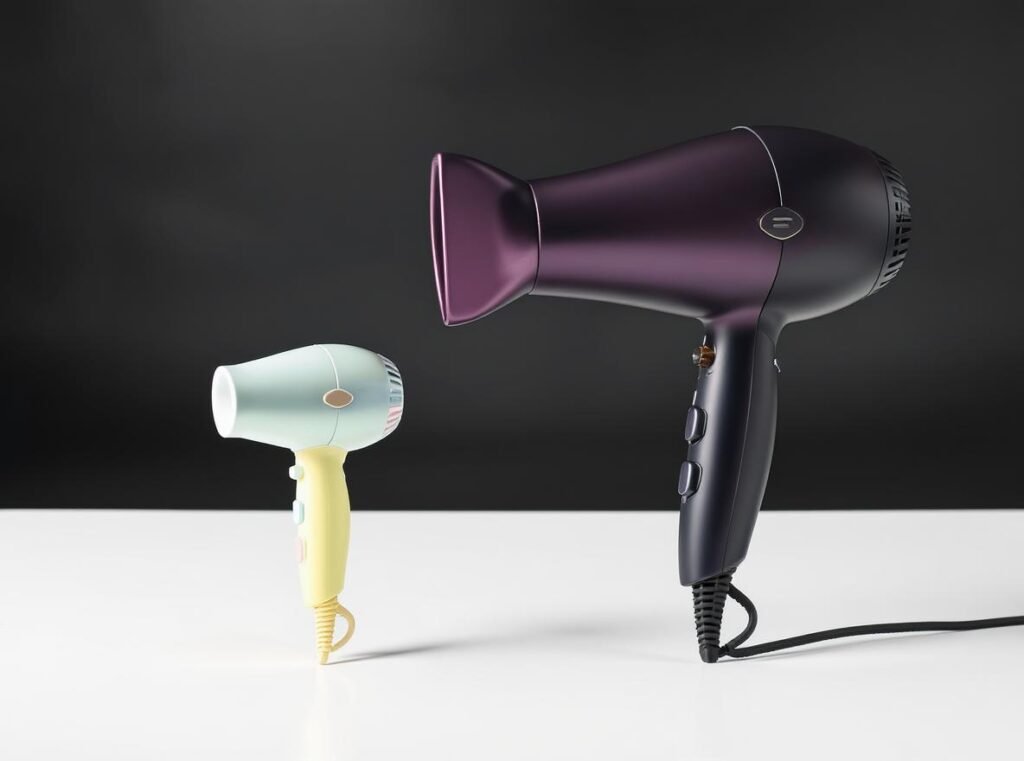
The comparison reveals significant differences across multiple categories. Child dryers prioritize safety and comfort over raw performance, while adult models emphasize speed and styling capabilities.
Size and weight considerations show the most obvious differences. Child models are specifically engineered to be lighter and more compact, making them easier for small hands to handle safely.
Heat and airflow settings reflect the different needs of each user group. Children require gentler treatment to protect sensitive scalps and fine hair, while adults often prefer higher heat for faster drying times.
| Feature | Child Hair Dryers | Regular Hair Dryers |
|---|---|---|
| Size & Weight | Smaller, lighter (0.8-1.2 lbs) | Larger, heavier (1.5-2.5 lbs) |
| Heat Settings | Lower, more limited (80-120°F) | Higher, wider range (120-200°F) |
| Airflow | Gentler, less forceful | Stronger, faster |
| Noise Level | Quieter (under 70dB) | Can be loud (80dB+) |
| Safety Features | Overheat protection, cool shot, anti-scald, GFCI | May lack child-specific features |
| Attachments | Simple, sometimes fun designs | More variety, professional options |
| Design | Often colorful, playful | Standard, professional |
| Drying Time | 4-7 minutes | 3-5 minutes |
The trade-off between safety and performance becomes apparent in drying times. Child dryers typically require 15-20% longer to dry hair completely, but this extended time comes with significantly enhanced safety profiles.
What Are the Best Features for Different Age Groups?
Children’s hair care needs evolve significantly as they grow, requiring different dryer features for optimal safety and effectiveness at each developmental stage.
Features should match your child’s age and developmental stage: toddlers need maximum safety with very low heat, young children benefit from adjustable settings and fun designs, while older children can handle more styling options with continued safety supervision.
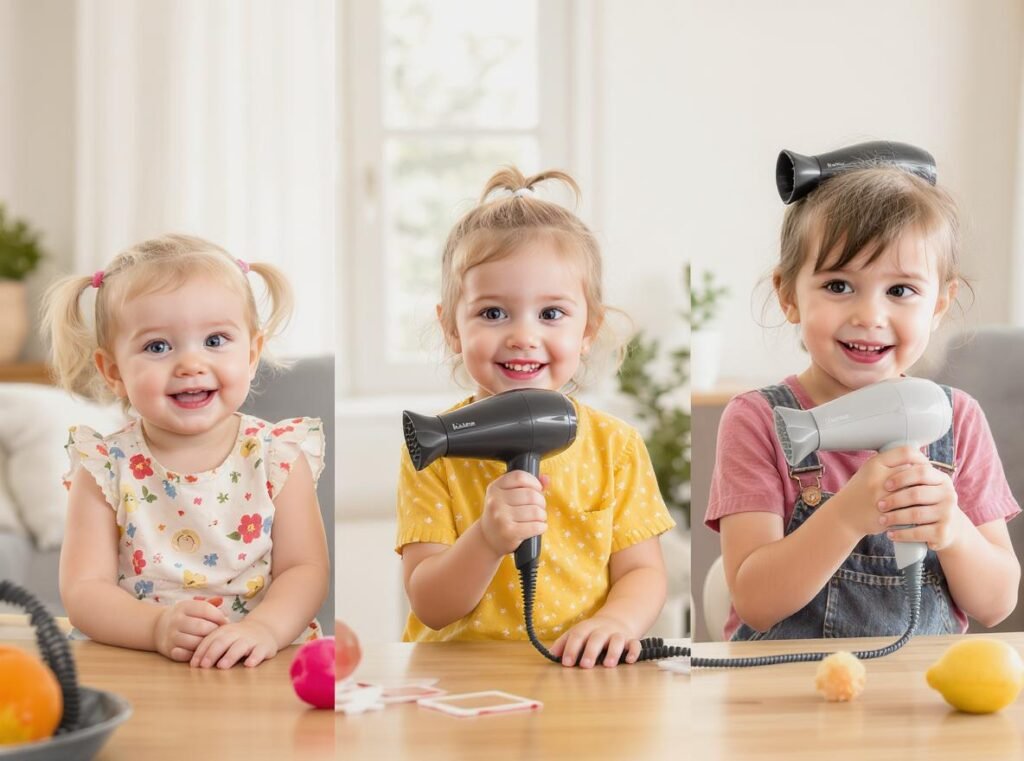
Toddlers (1-3 years) require maximum protection with minimal complexity. At this age, parents maintain complete control over the drying process, focusing on gentle treatment and safety.
Essential features for toddlers include:
- Very low heat and gentle airflow settings
- Extra-quiet operation to prevent startling
- Lightweight design for easy parent handling
- Overheat and anti-scald protection
- Automatic shutoff timers
Young Children (4-7 years) can begin learning about hair care while still requiring significant safety measures. This age group benefits from engaging features that make the experience enjoyable.
Key features for young children:
- Adjustable heat and speed settings with safety limits
- Cool shot button for learning proper techniques
- Fun, engaging designs that reduce anxiety
- Safety plug and cord management systems
- Simple, intuitive controls
Older Children (8-12 years) can handle more sophisticated features while maintaining safety standards. They’re developing independence and can learn proper hair care techniques.
Advanced features for older children:
- More styling options including diffuser and concentrator attachments
- Slightly higher heat settings with supervision
- Still lightweight and easy to use independently
- Educational features about hair care safety
- Durability for increased frequency of use
Consider your child’s individual maturity level alongside their chronological age. Some younger children demonstrate exceptional responsibility, while others may need extended periods with maximum safety features.
Are Professional Hair Dryers Safe for Children?
Many parents wonder if investing in high-end professional equipment might provide better results while maintaining adequate safety standards.
Professional hair dryers are generally not recommended for young children. They are often heavier, hotter, and more powerful, increasing the risk of burns, discomfort, and hair damage. However, some high-end models like Dyson or Shark offer advanced heat control and quieter operation, which can be safer with caution and adult supervision.
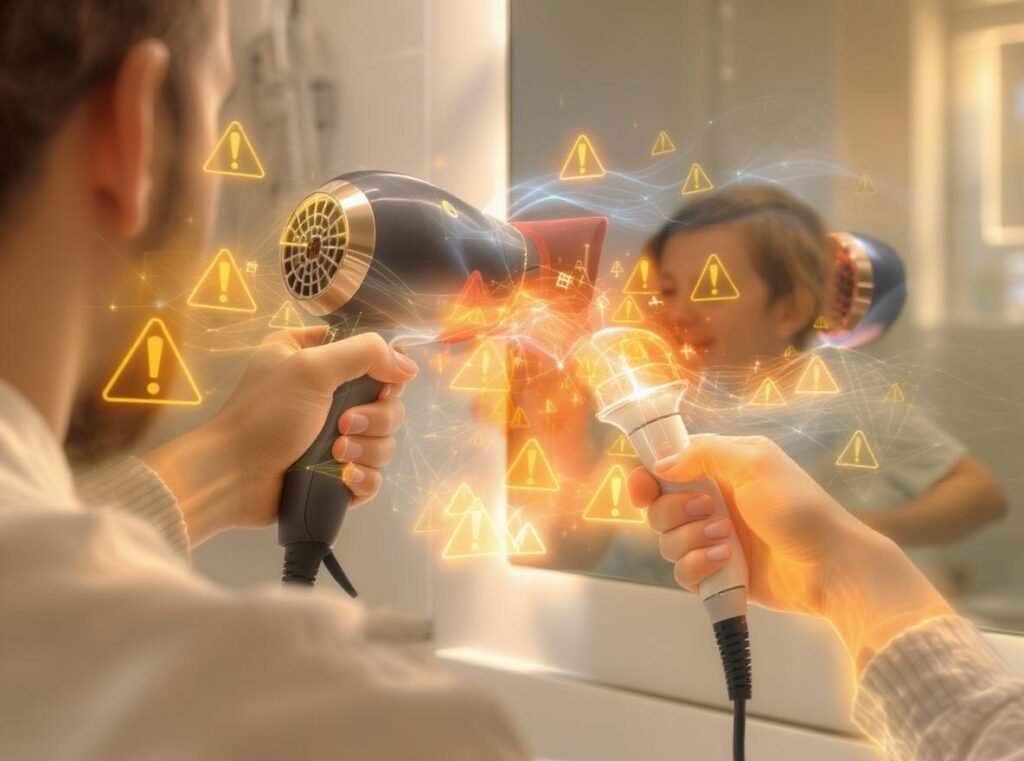
Professional dryers present both advantages and significant risks for child use. While they offer superior performance, consistent airflow, and advanced technology, they typically lack child-specific safety features.
The primary concerns with professional models include higher operating temperatures, heavier construction, and more complex controls. Most professional dryers operate at temperatures exceeding 200°F, which can easily burn sensitive child skin.
However, some premium professional models incorporate advanced safety features:
Safer Professional Features:
- Intelligent heat control that adjusts temperature automatically
- Quieter operation through advanced motor design
- Ionic technology that reduces static and frizz
- Multiple safety sensors and automatic shutoffs
Risk Factors to Consider:
- Higher maximum heat settings than necessary for children
- Heavier weight that increases handling risks
- More complex controls that children may misuse
- Higher cost without proportional safety benefits
If considering a professional dryer for family use, always use the lowest heat and speed settings and maintain at least six inches distance from the scalp. The Conason P1C high-speed hair dryer offers an excellent compromise, providing professional-grade performance with intelligent safety features suitable for the whole family.
How to Choose the Right Hair Dryer for Your Child?
Selecting the perfect hair dryer involves balancing safety, functionality, and your child’s specific needs while considering long-term usability.
Key steps include assessing your child’s age and hair type, prioritizing safety features, choosing lightweight and compact models, checking for adjustable settings, considering noise levels, looking for child-friendly designs, and reading reviews from other parents about ease of use and safety.
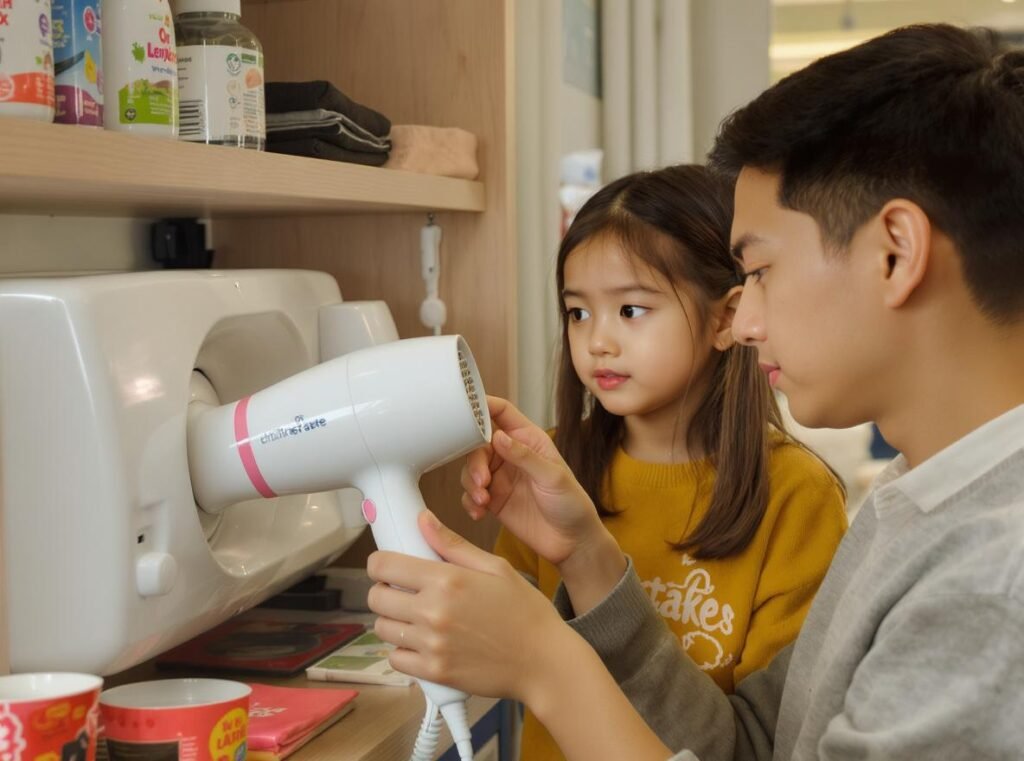
Assessment Process:
Begin with a comprehensive evaluation of your child’s specific needs. Age and hair type significantly influence the appropriate features and safety requirements.
Hair Type Considerations:
- Fine hair requires very gentle, low-heat treatment
- Thick hair needs more powerful airflow but controlled temperature
- Curly hair benefits from diffuser attachments and ionic technology
- Chemically treated hair demands extra gentle heat protection
Safety Feature Prioritization:
Focus on these essential safety elements:
- Overheat protection for automatic temperature control
- Cool shot button for safe style setting
- Anti-scald design for burn prevention
- GFCI plug for electrical safety
- Adjustable settings for growing independence
Practical Considerations:
Weight and ergonomics directly impact safety. Choose models under 1.5 pounds for easier handling by both parents and children. Compact designs reduce storage challenges and travel complications.
Noise levels affect the overall experience. Look for models operating under 70 decibels to minimize stress and fear in sensitive children.
Additional Selection Criteria:
- Cord length and safety management
- Warranty and customer service availability
- Attachment compatibility for future styling needs
- Budget considerations balanced with safety requirements
- Brand reputation for child-safe products
For wholesale buyers and retailers, consider stocking a range of options covering different age groups and price points. The growing market awareness of child safety in personal care products presents significant business opportunities.
Summary
Special hair dryers for children provide essential safety features including lower heat settings, gentle airflow, lightweight design, and enhanced protective mechanisms. While not strictly necessary, they significantly reduce risks of burns and hair damage while making the experience more comfortable for young users. When choosing a child-safe hair dryer, prioritize safety features over performance, match features to your child’s age and developmental stage, and select models that can grow with your family’s evolving needs.

Ready to explore professional-grade safety features for your family? Visit our products collection to discover how the Conason P1C high-speed hair dryer combines professional performance with intelligent safety features suitable for all family members, or contact us for wholesale inquiries about our complete range of family-friendly hair care solutions.

